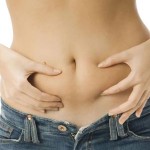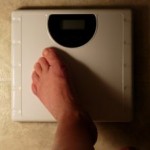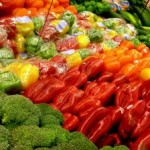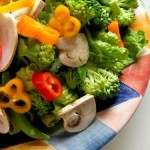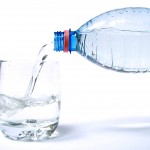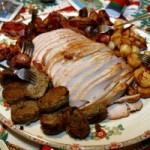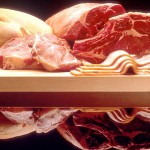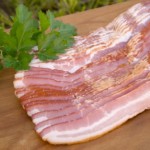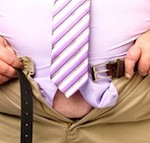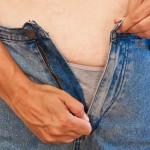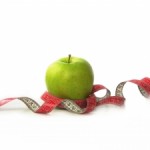Welcome back!!
Here are five truths about fat loss that you often do not get told by the ‘weight loss gurus’ out there:
1. Prepare to be uncomfortable – At least for the first while.
In order to ose fat you have to make changes and as we have seen inprevious posts your body doen’t like change very much. in fact it fights it!! Thsi means that if you are serious about fat loss and are using a real program you will feel uncomfortable for a little while while your body starts to accept and then utilse the changes you are making.
One of the easiest changes to make is to eat less. by this I mean try to eat less than you are normallycomfortable with.
We all know that lose fat we have to create some form of calorie deficit on a regular basis and a simple way to do this is to eat less than what has become ‘normal’ for us.
The key to doing this succesfuly is to eat foods that promote a feeling of satiety – and this means lean proteins, fibrous carbs and good fats with a distinct lowering of processed carbs.
If you can do this on a regular basis, eating less will quickly become the new ‘eating normal’ for you.
2. This is a tough one, especially in this day of media overkill interms of how we should look & act – but compare yourself to yourself.
No two people’s shapes are the same, everyone has a different body shape so it makes no sense at all to say I don’t look like Brad Pitt (I don’t!) or Angelina Joie ( I definately don’t!!) as no=one does.
The photos we see on magazine covers of either celebrities, models or just ‘beautiful people’ are photshopped, airbrushed, and taken from expertly lit photo shoots done by professionals. No real person can look like that without the same technology and support (make-up, lighting, personal chefs etc etc) being available. Yet we tend to compare us to these images and almost EVERY picture you see a completely unrealistic illustration of a human body. And like it or not, no matter how hard we try we will never look like these images…
By all means use the mass media images as a means of inspiration but the ONLY person you should be comparing yourself to is yourself. Use the mirror and way your clothes fit to chart progress and focus on becoming the best that you can, not the bestt hat Photshop can produce…
3. Be in a hurry but be patient. At the same time.
Sounds crazy but what I mean is that there is NO evidence to back up the idea that the maximum ‘safe’ fat loss is a couple of pounds a week. This is an arbitary number that has gained widespread acceptance without any scientific backing.
It is possible to lose a lot of weight more quickly than this – but (notice I said weight and not fat) the usual drastic means often mean fluid loss, wrecked metabolisms and ending up a skinny fat person.
You can safely lose over 20 pound of fat in a month by using the right protocols – eating nutrient dense, calorie sparse foods; increasing your lean protein intake, exercising so you maintain muscle mass and increase your metabolic rate and use diet tricks that manipulate your hormones and enable you to successfully combat your body’s desire to maintain the status quo. These things usesd together will deliver a string fat loss.
So you you sould be in a hurry to get on the right program and begin to make the necessary changes so your metabolism becomes fitred up again.
You should be patient as even with a fat loss of 20 pounds in a month you are unlikely to see thaose 6-pack abs or get as lean as you want. This is where you keep at it and twatch the results come.
In my experience most 30 -day body recompositions for someone who is over 30 pounds overweight progress something like this:
First Week – Some cravings, your body is fighting back some soreness from unaccustomed exercise.
Second Week – The odd craving or 2 surfaces, your body is getting used to eating differently, you have dropped some size, exercise is not as challenging and you feel stronger.
Third Week – No cravings, visible changes, clothes fit better you are stringer & feel fitter & stronger, energy levels rise.
Fourth Week– Waist measurements are lower, your shape is diffeent- especially in the arms & legs and under the chin; the food is second nature, the exercise a habit and you are seein gthe results of a 20 pond fat loss and feeling great.
Again – this is generic – how your body and your mind react will be unique to you but in general if you follow a program like the ones outlined in previous blogs thisis what will happen.
4. Just because you are exercising more does not mean that you can eat more. Not yet.
Remeber you are trtying to fire up your metabolism and a proper program will enable you to eat the right fuel and not feel hungry. However there is a persistent myth that just because you exercise you can ‘reward’ yourself by eating lots more or even re-introducing some of the foods that got you fat in the first place.
Wrong – you cannot & should not. At least not until you are at your goal shape (again shape NOT weight). Once you are there you can switch to a maintenance program and frankly after 30 plus days of eating correctly you will not likely want to over eat or eat junk. (NB a good program allows for ‘Cheat days” where you eat what you want but again over time even on the cheat days you’ll find your desire for poor food much diminished.)
5. Lastly understand that your weight will flucuate over your fat loss journey.
So don’t weigh yourself every day – this is the quickest route to depression and falling off the leannes wagon there is.
Your goal is fat loss, part of this is increasing lean mass. Lean masss weighs more than fat so the scales could show you even gaining some weight in the early weeks. Add to this diferences in fluid intake & retention, Menses, the differing effects of different foods and your weight can alter as much as 6 or 7 pounds from day to day.
Use the mirror, use your clothes and if you have to use the scales do it once a week at the same time and on the same day.
Stay the course and focus on the monthly trend.
I’ll be back soon!! Be well!!

